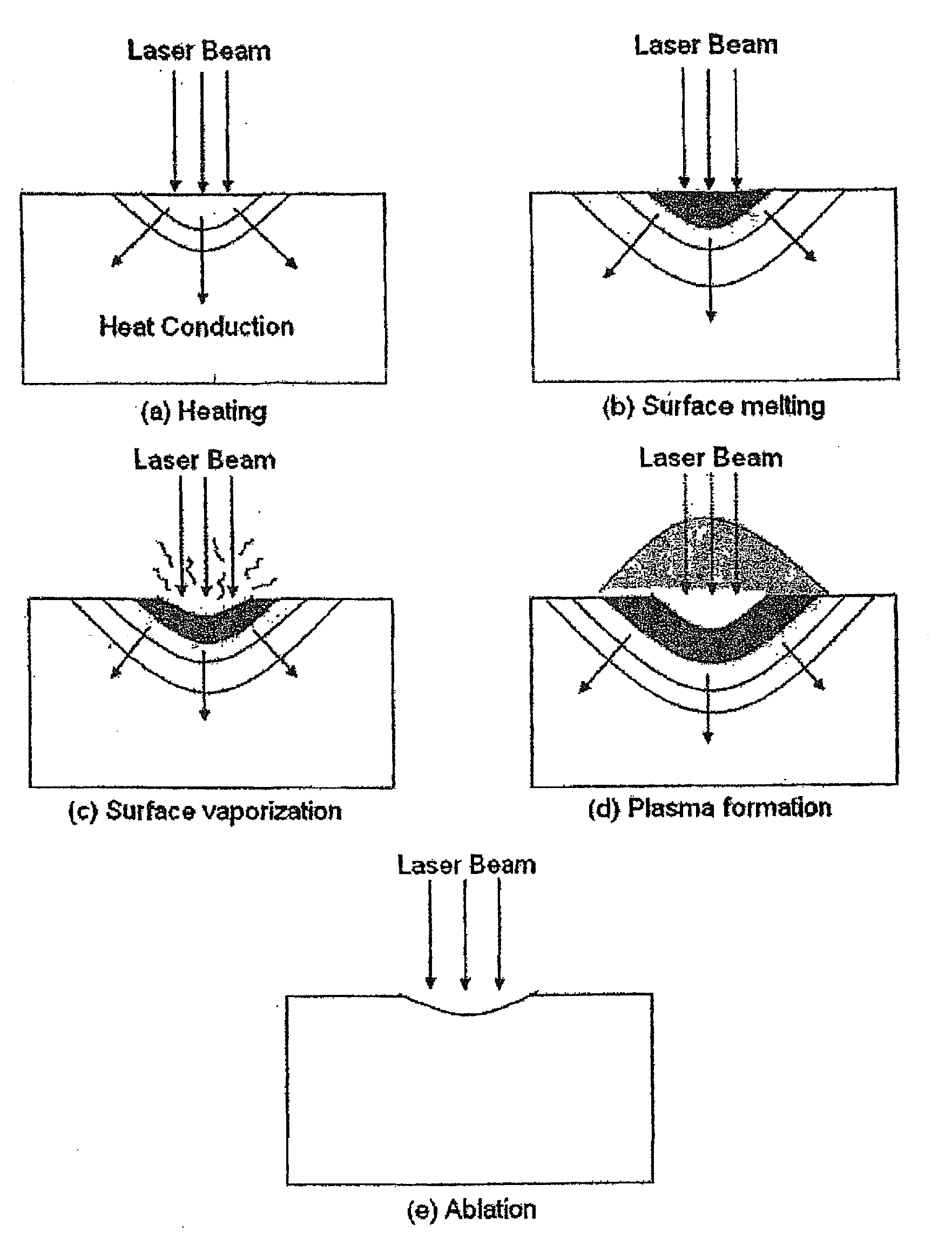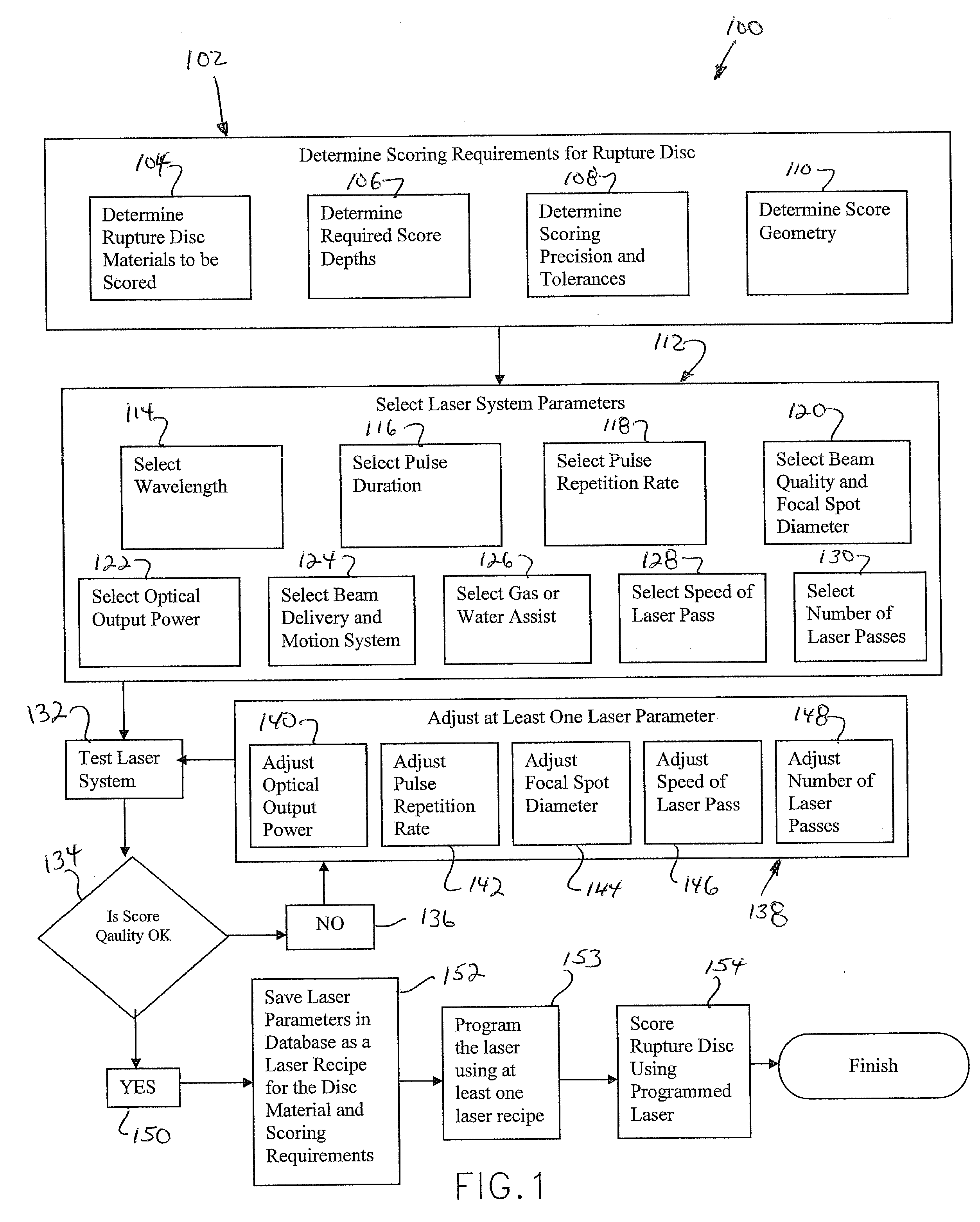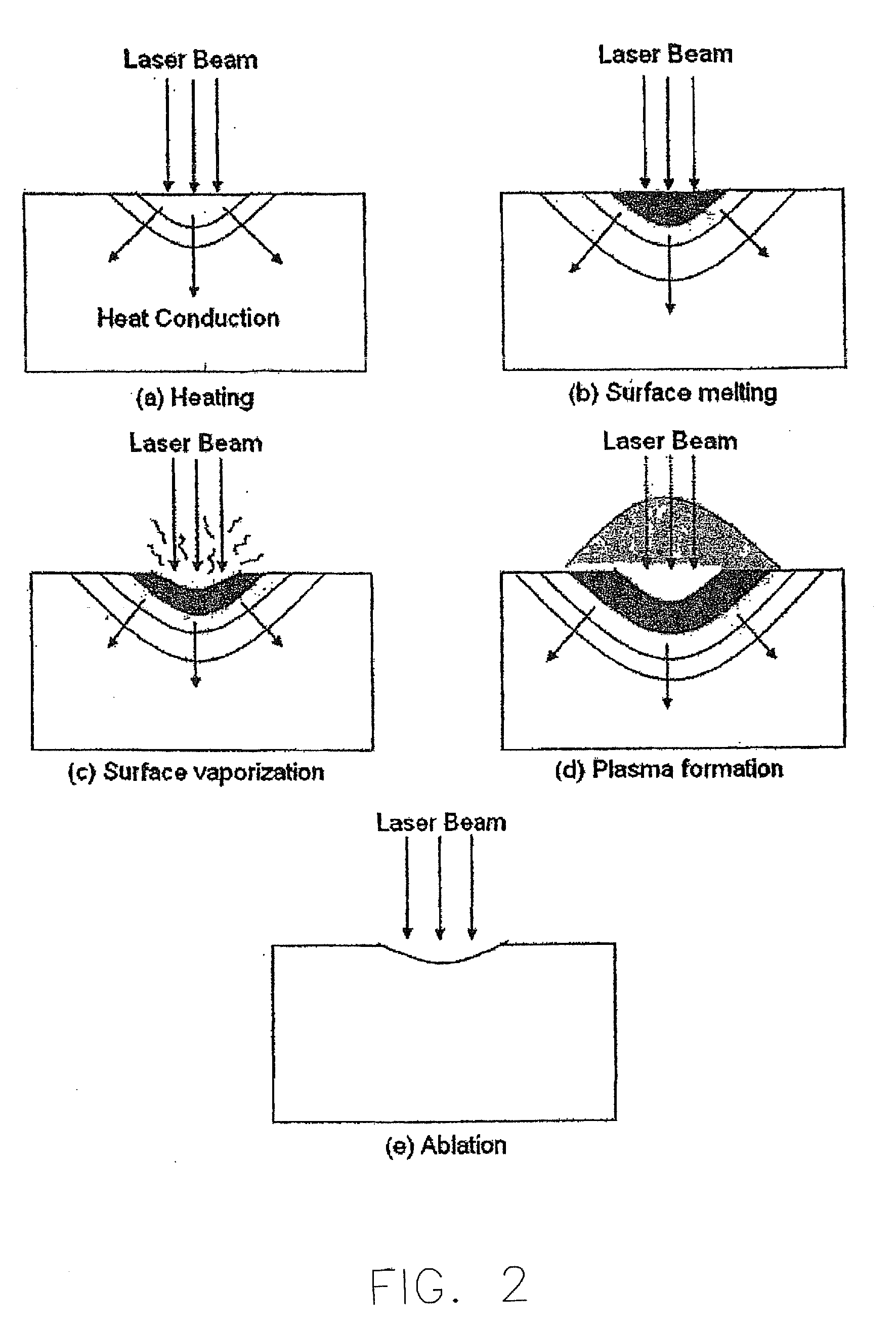Machining score lines in a rupture disc using laser machining
a technology of laser machining and rupture disc, which is applied in the direction of manufacturing tools, functional valve types, mechanical equipment, etc., can solve the problems of reducing the accuracy of the machining, and reducing the service life of the disc, so as to reduce the heat affected zone, the effect of maximizing the peak power of the laser and reducing the heat affected zon
- Summary
- Abstract
- Description
- Claims
- Application Information
AI Technical Summary
Benefits of technology
Problems solved by technology
Method used
Image
Examples
Embodiment Construction
[0031]The following description of the preferred embodiment(s) is merely exemplary in nature and is in no way intended to limit the scope of the present invention, its applications, or uses.
[0032]The present invention involves the utilization of a laser beam to remove material from rupture discs to create lines of weakness (score lines) of various widths, depths and configurations. The following method can be utilized to score lines of weakness in any type of rupture disc including tension-type disc domes, flanges, diaphragms and panels, reverse-acting disc domes, flanges, diaphragms and panels, and any other type of rupture device. Rupture disc as used herein throughout this application is intended to include all types of forward acting tension type rupture discs, reverse-acting rupture discs, vent panels, explosion vents, explosion panels, rupture panels, and rupture diaphragms regardless of their shape and configuration including dome shaped and flat discs.
[0033]Laser machining c...
PUM
| Property | Measurement | Unit |
|---|---|---|
| wavelength | aaaaa | aaaaa |
| wavelength | aaaaa | aaaaa |
| speed | aaaaa | aaaaa |
Abstract
Description
Claims
Application Information
 Login to View More
Login to View More - R&D
- Intellectual Property
- Life Sciences
- Materials
- Tech Scout
- Unparalleled Data Quality
- Higher Quality Content
- 60% Fewer Hallucinations
Browse by: Latest US Patents, China's latest patents, Technical Efficacy Thesaurus, Application Domain, Technology Topic, Popular Technical Reports.
© 2025 PatSnap. All rights reserved.Legal|Privacy policy|Modern Slavery Act Transparency Statement|Sitemap|About US| Contact US: help@patsnap.com



